How to order
-UPDATE- These are now selling for $220.00.
I’m making these new knives personally one at a time. They will be made to order with sizing specifics determined by you the customer. They are flame-colored stainless steel. The knurling has the best grip of any knives I’ve ever used, especially the ones with the annular rings. The yoke has two bearings for stability and is exceptionally smooth. My blades are made of D2 blade steel. To order one I just need an email address, shipping address, and phone number, to send an invoice That you will be able to securely pay online. Email to scsaddle@yahoo.com
Please specify the barrel length and diameter that you would like for your knife. The three in these pictures are 7/16″. Other choices are, 3/8″, 1/2″, 9/16″, and 5/8″.
To determine the length of the barrel that you want, study the picture to the right. You need to measure your current knife from the yoke saddle to the end of the barrel without a blade. Then, decide how much adjustment you want the new knife to have beyond the top end of the barrel. The knife can be made with the barrel top right below the yoke, or you can choose to have some adjustment room to set it shorter if needed. All knives are able to be set longer than the chosen barrel length.
To order a knife I specifically need the barrel length that you decide upon and the barrel diameter.
The picture at the far right illustrates a method that has proven particularly good for determining a swivel knife’s length based on hand size. It might be a good idea to try this with a knife that you currently use before measuring for your new knife.
I’m very excited about these unique knives and appreciate the opportunity to make them available to you.
Gordon
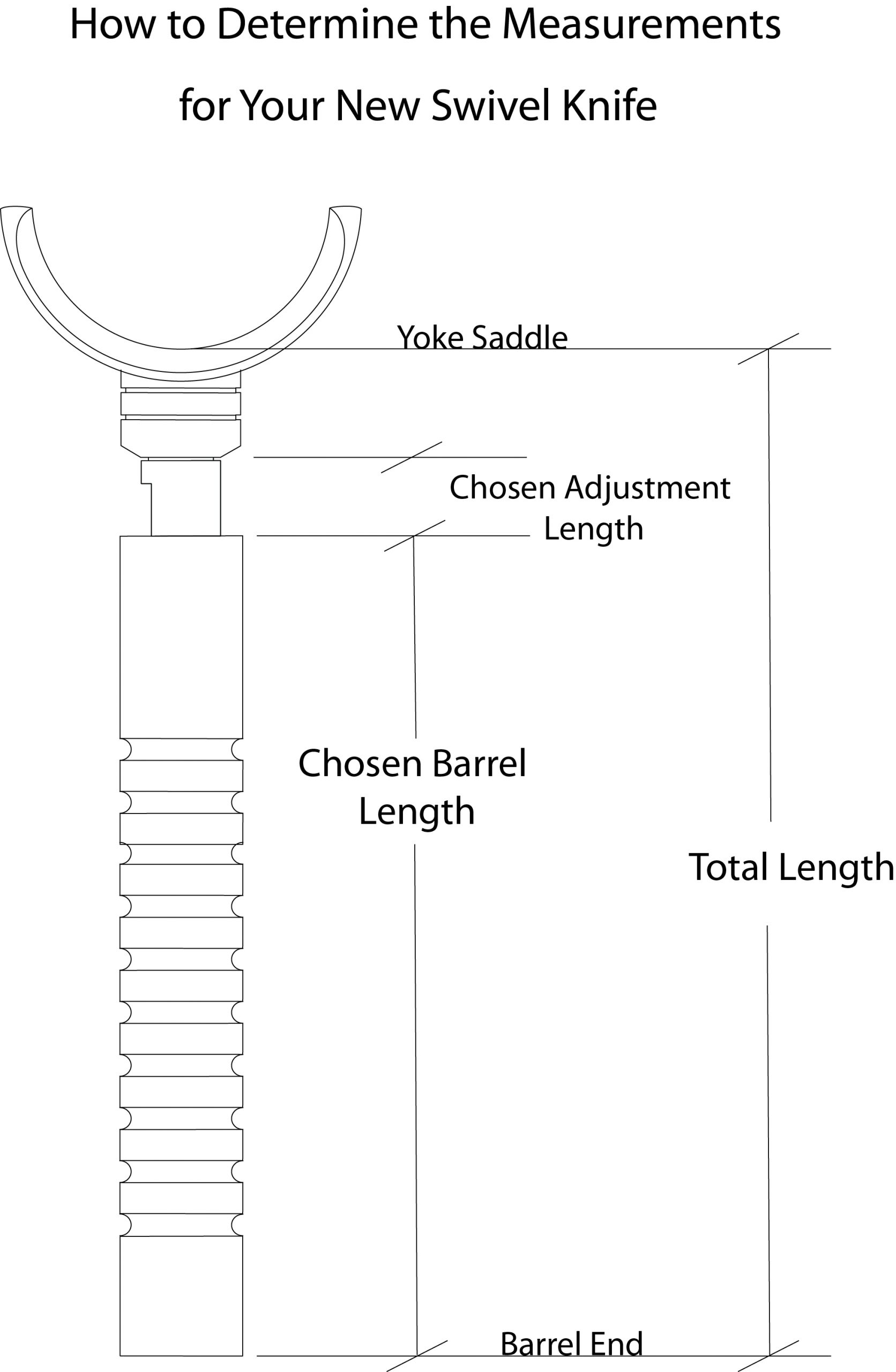
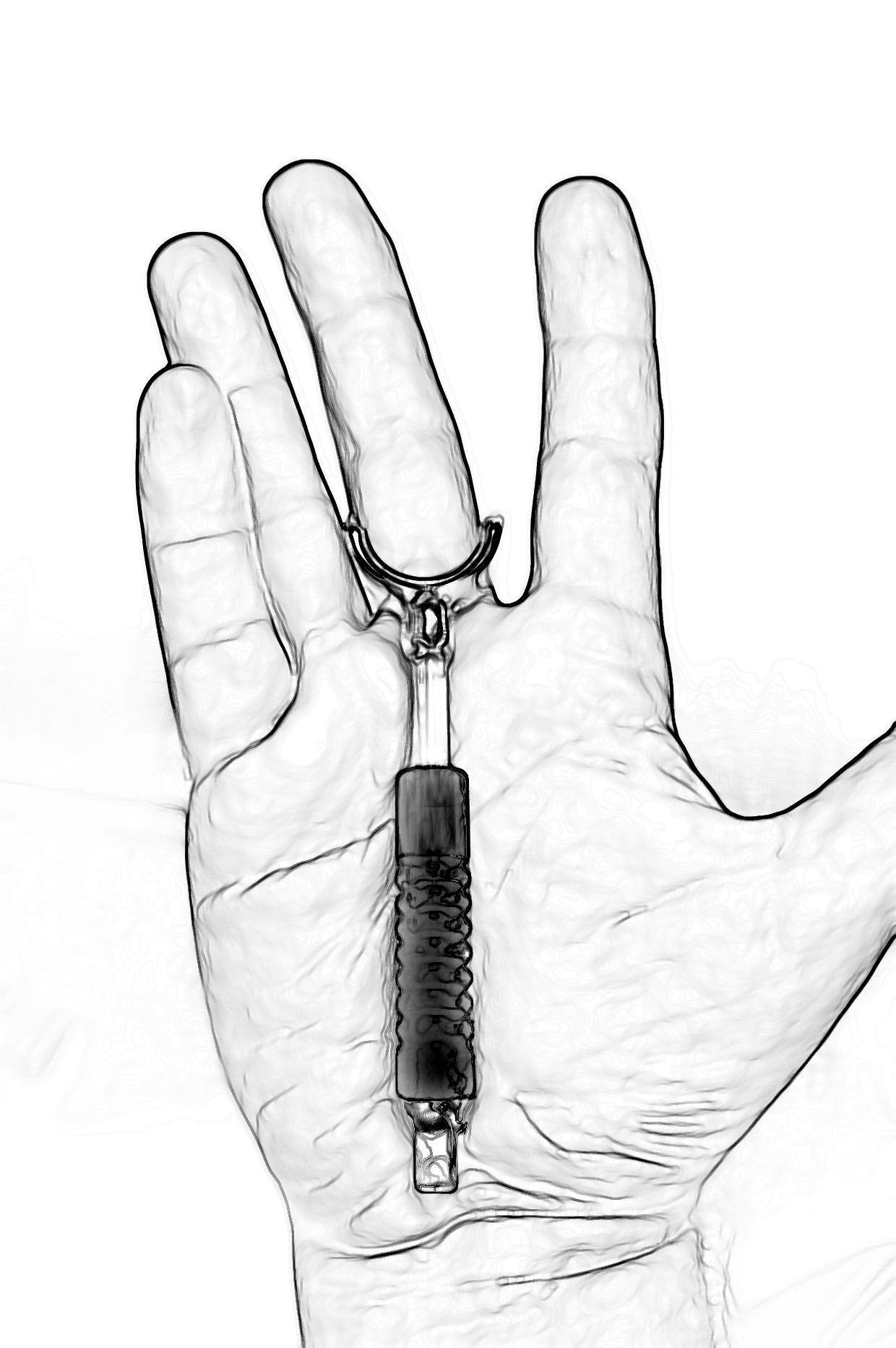
Knife length
From my book “Harmony and Life in Leather
“Understand the swivel knife and the ergonomics of its use.”
The knife, in the picture to the right, has been adjusted using the above method of finding the length from your hand size. It may be longer than many folks are accustomed to. Also, note that the fingers and side of the hand are up, off of the work surface, as are the forearm and elbow, freeing up the joints of the arm to move. The length of the knife is such that a natural stress is set up, in the index finger, which automatically pushes the knife downward into the leather. If you have always adjusted your knife to be shorter than this, you may think that this feels awkward. In fact, people who make this adjustment gain a great deal more control. With your hand and arm free of the bench top, you are free to move all of the linkages in your arm, to make long, flowing cuts that taper over their entire length.
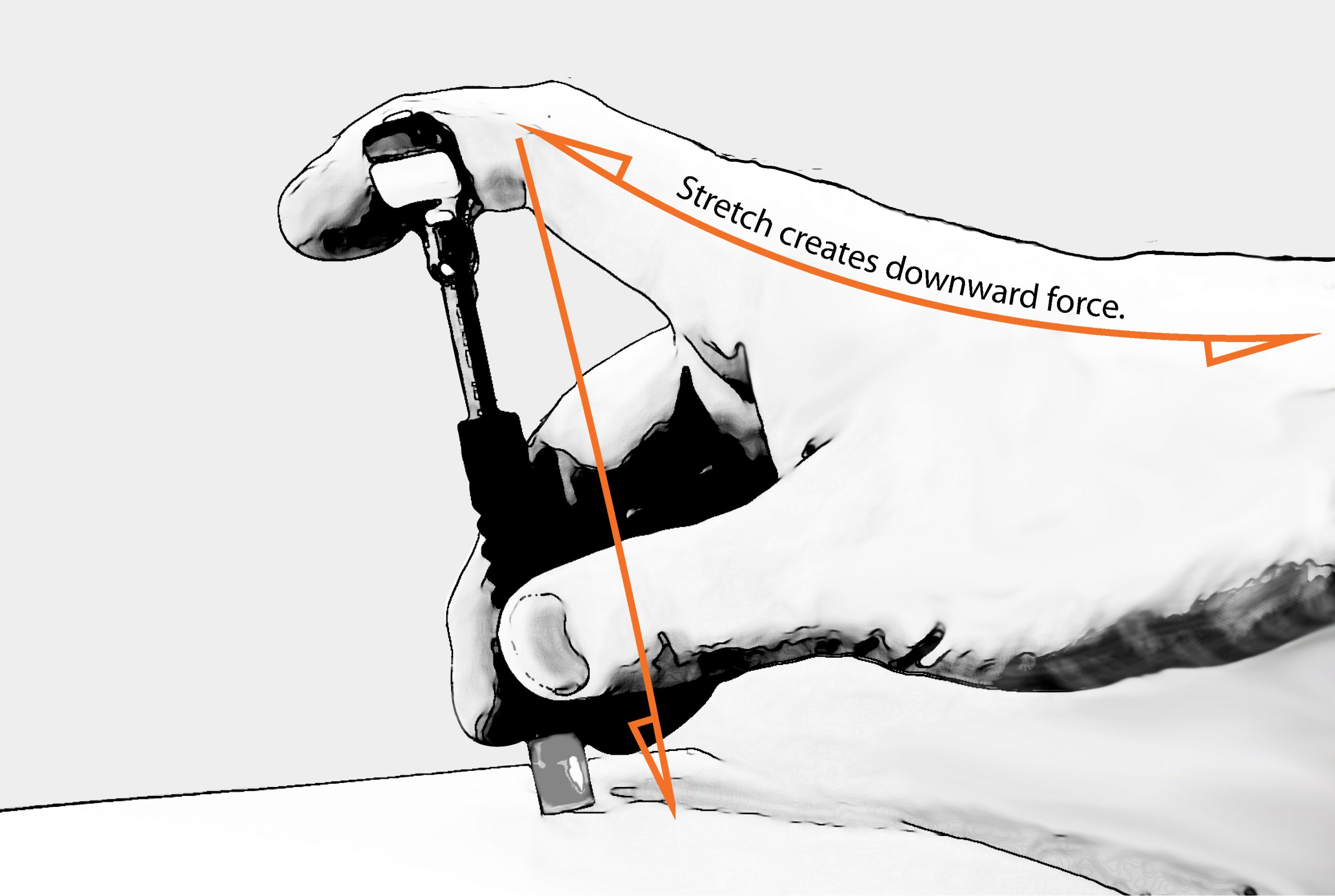

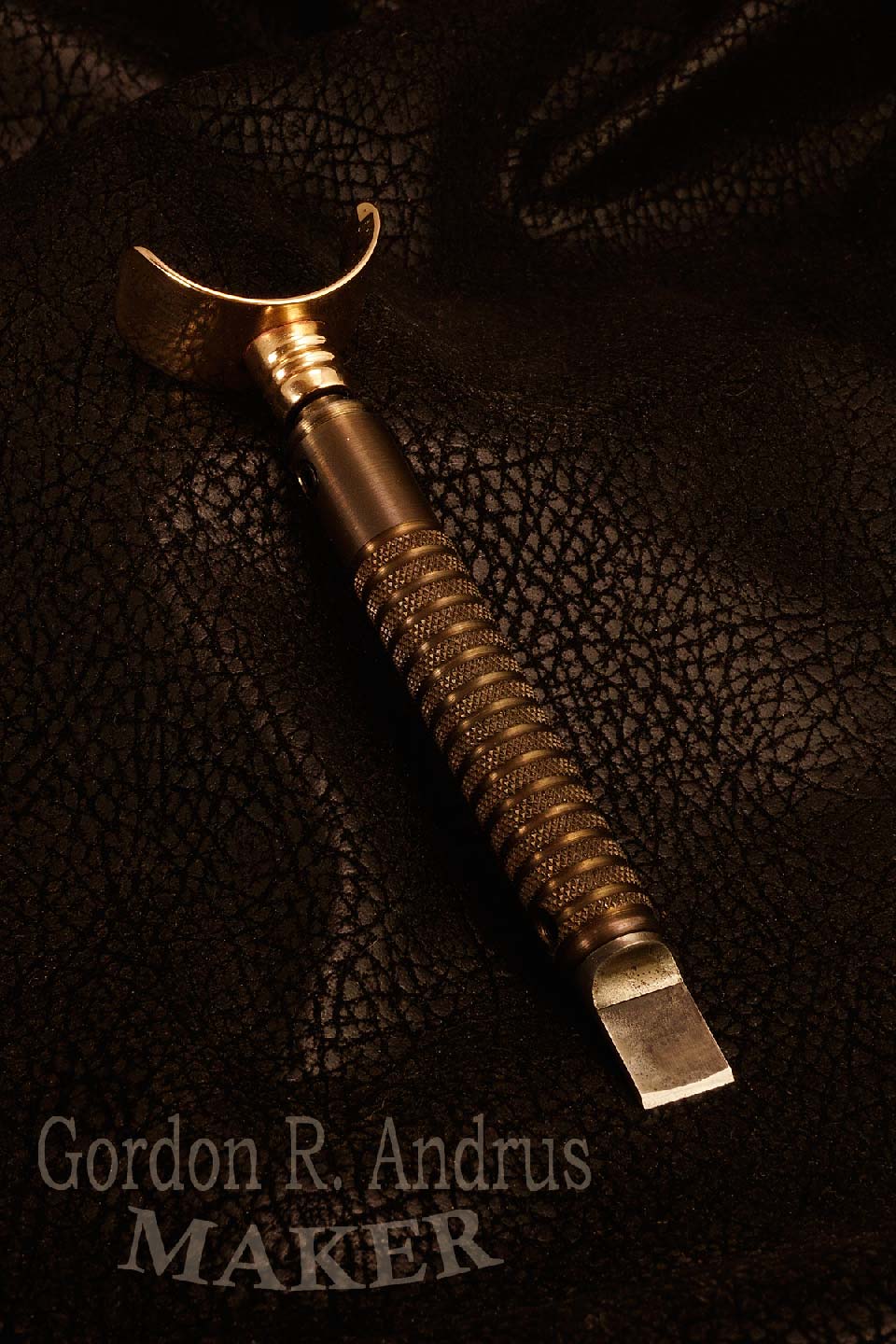
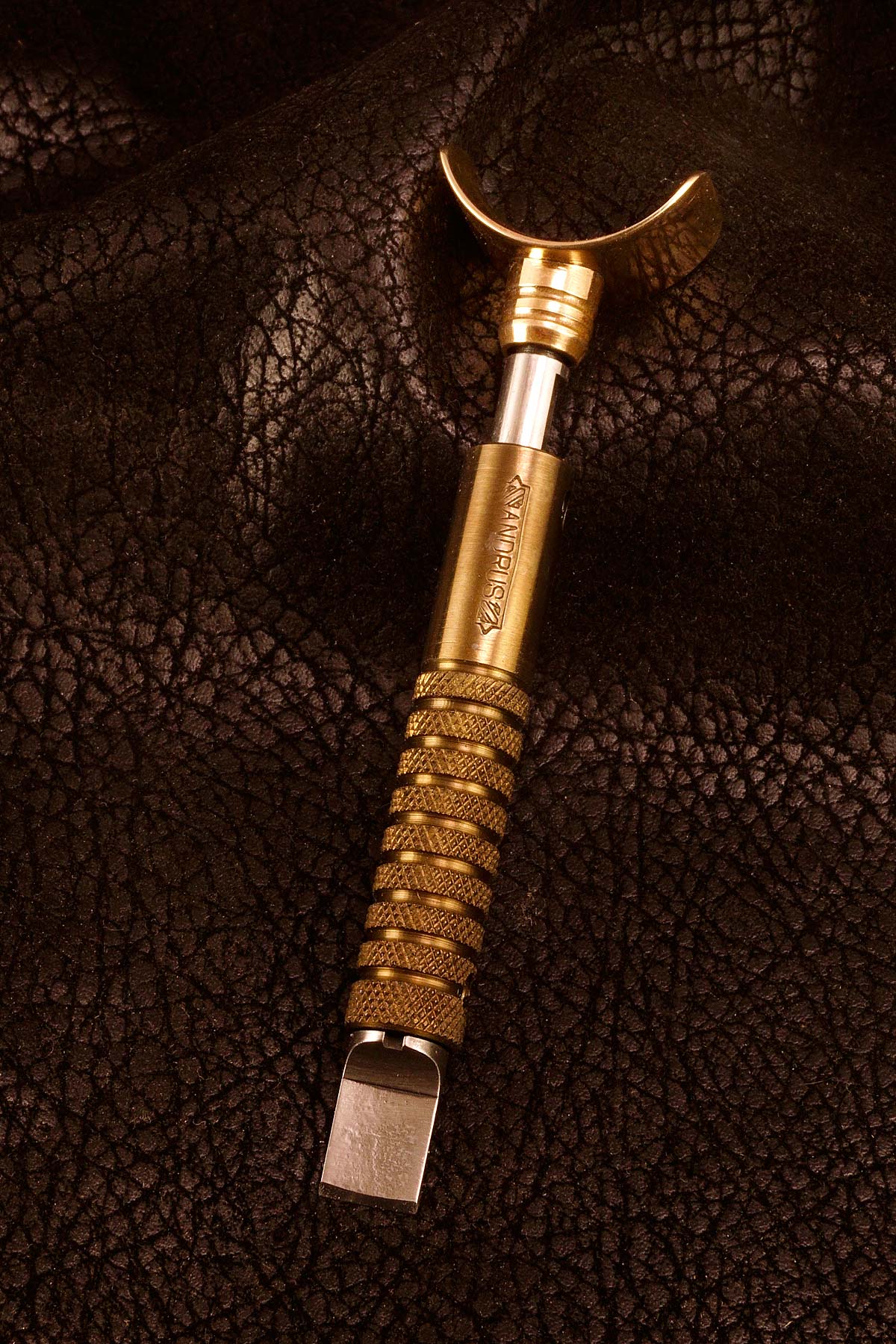
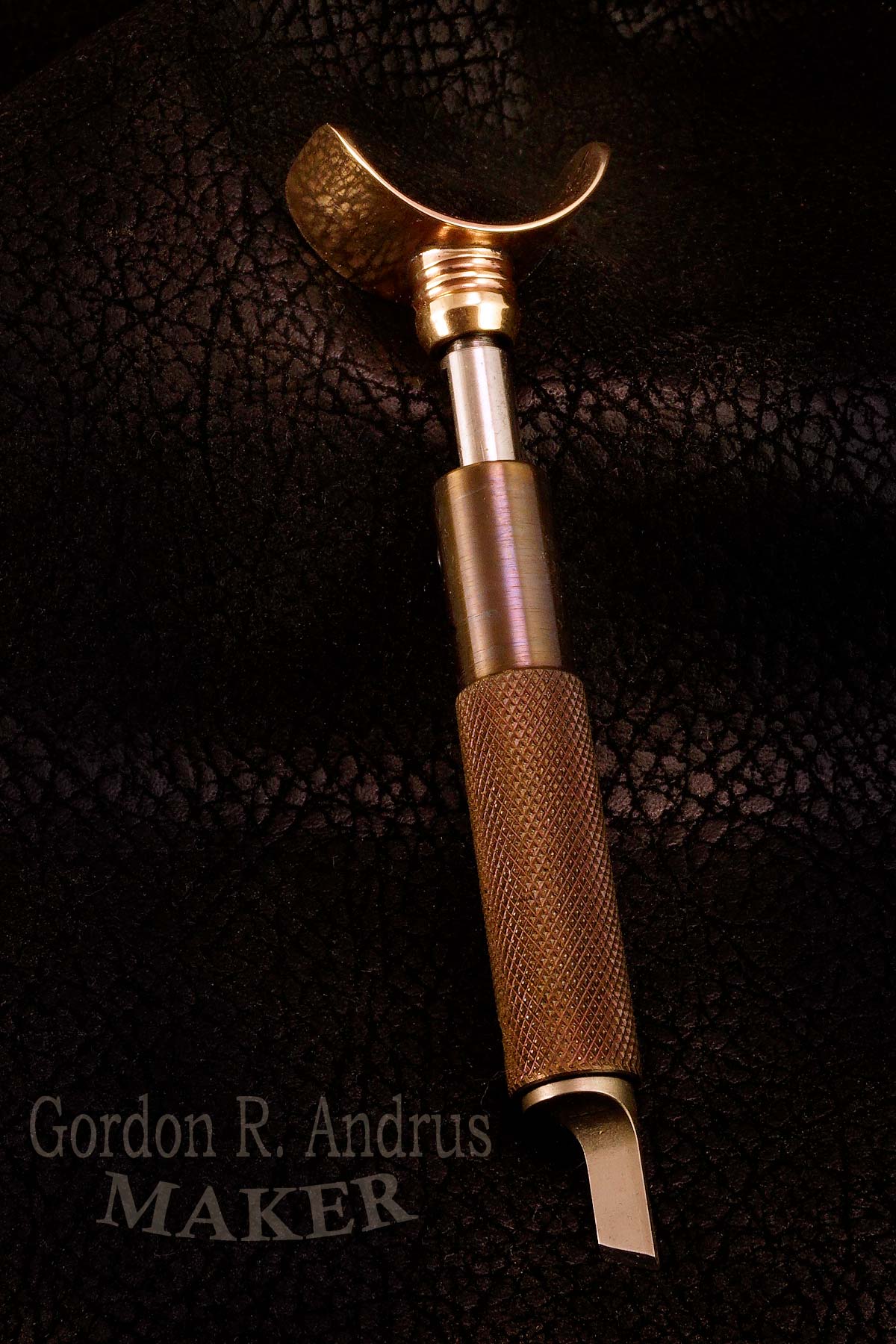
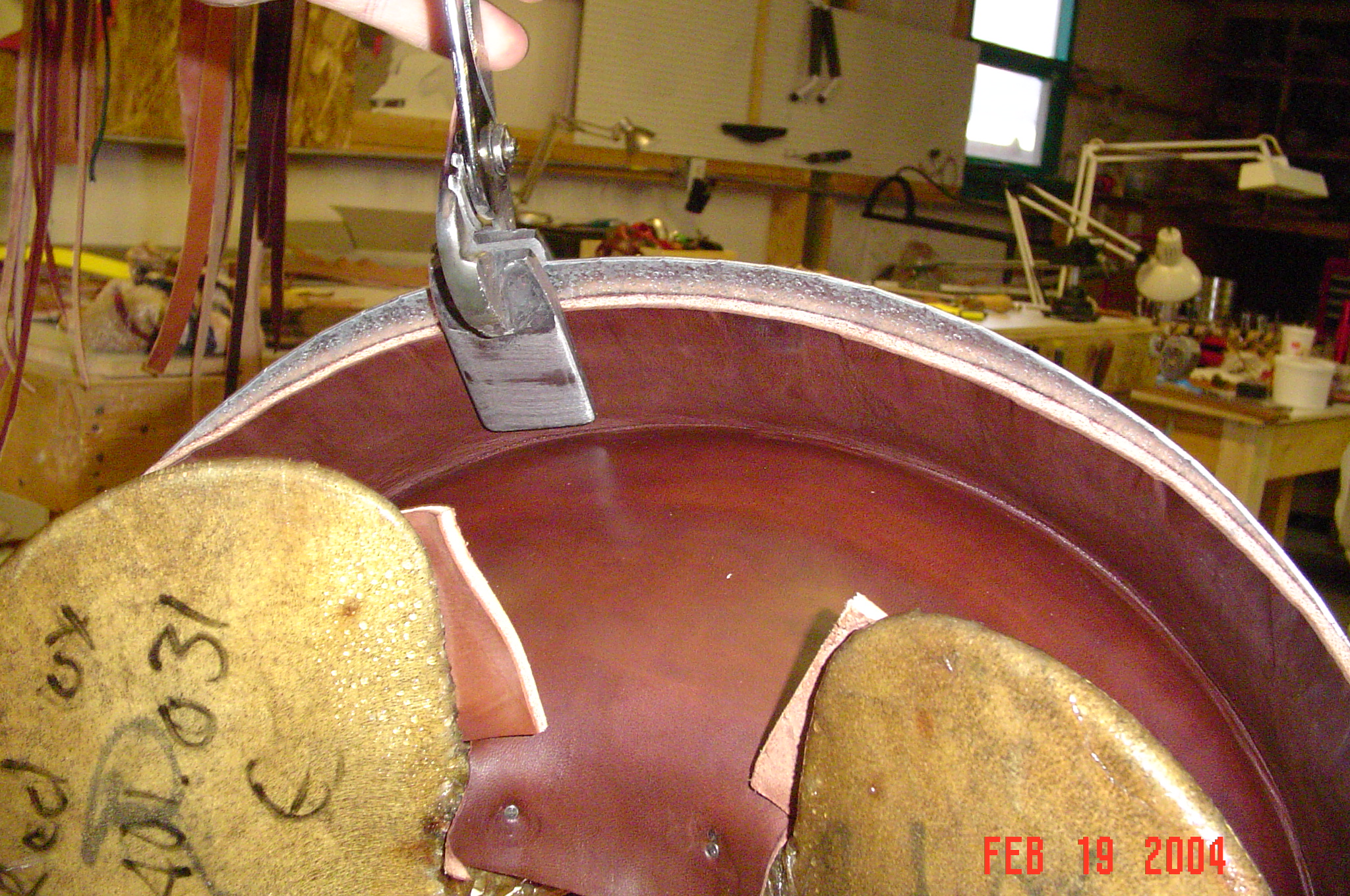
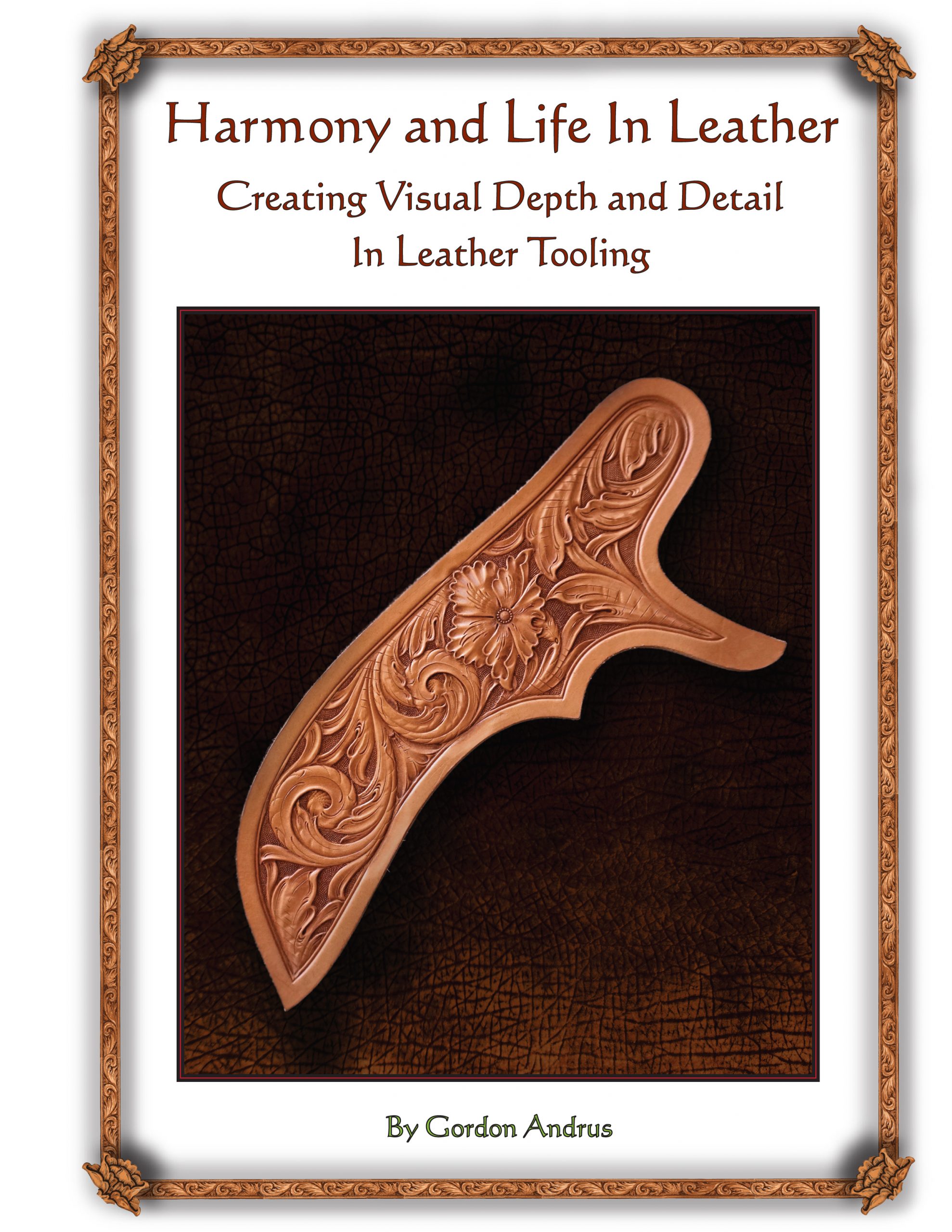
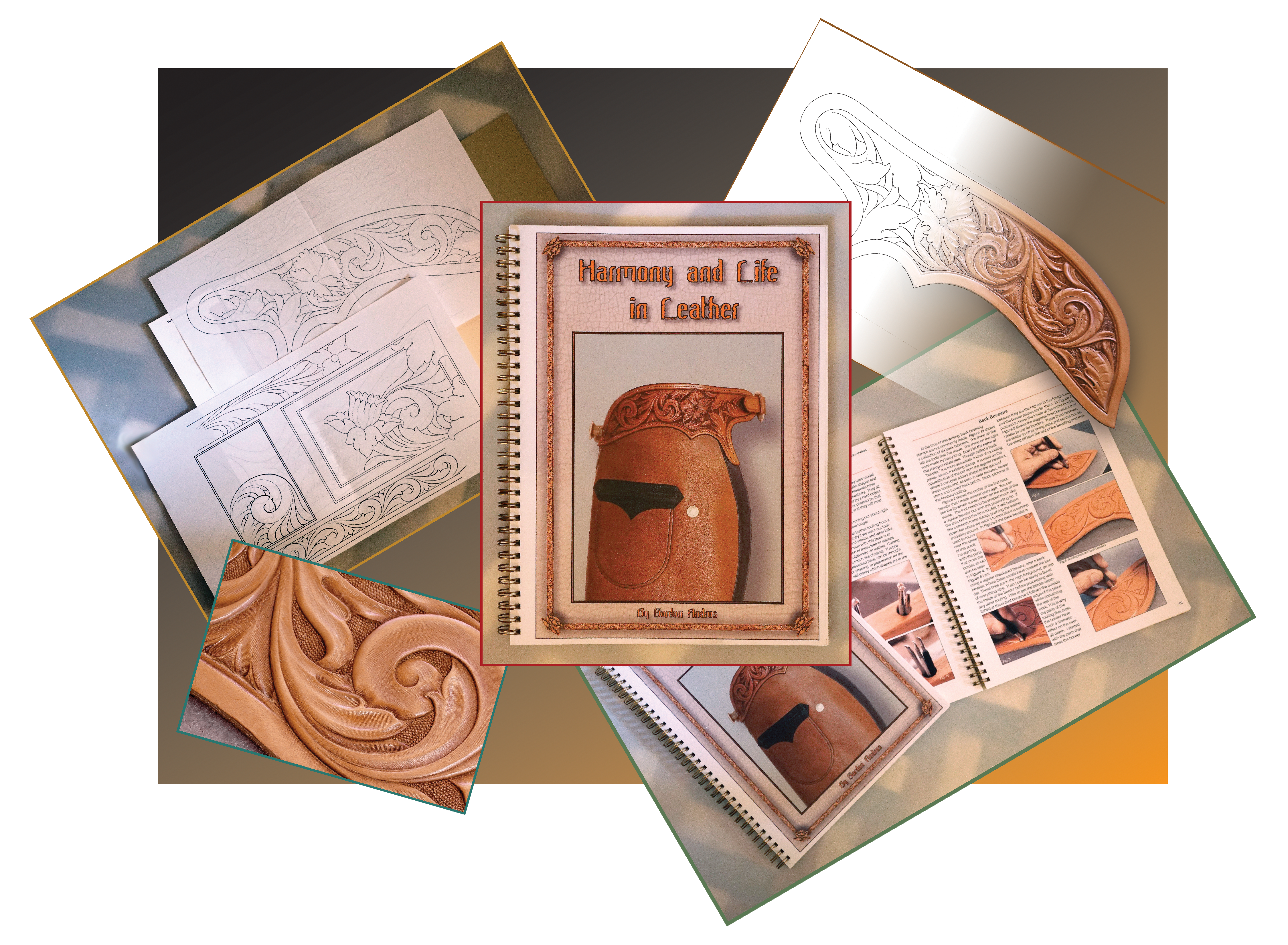
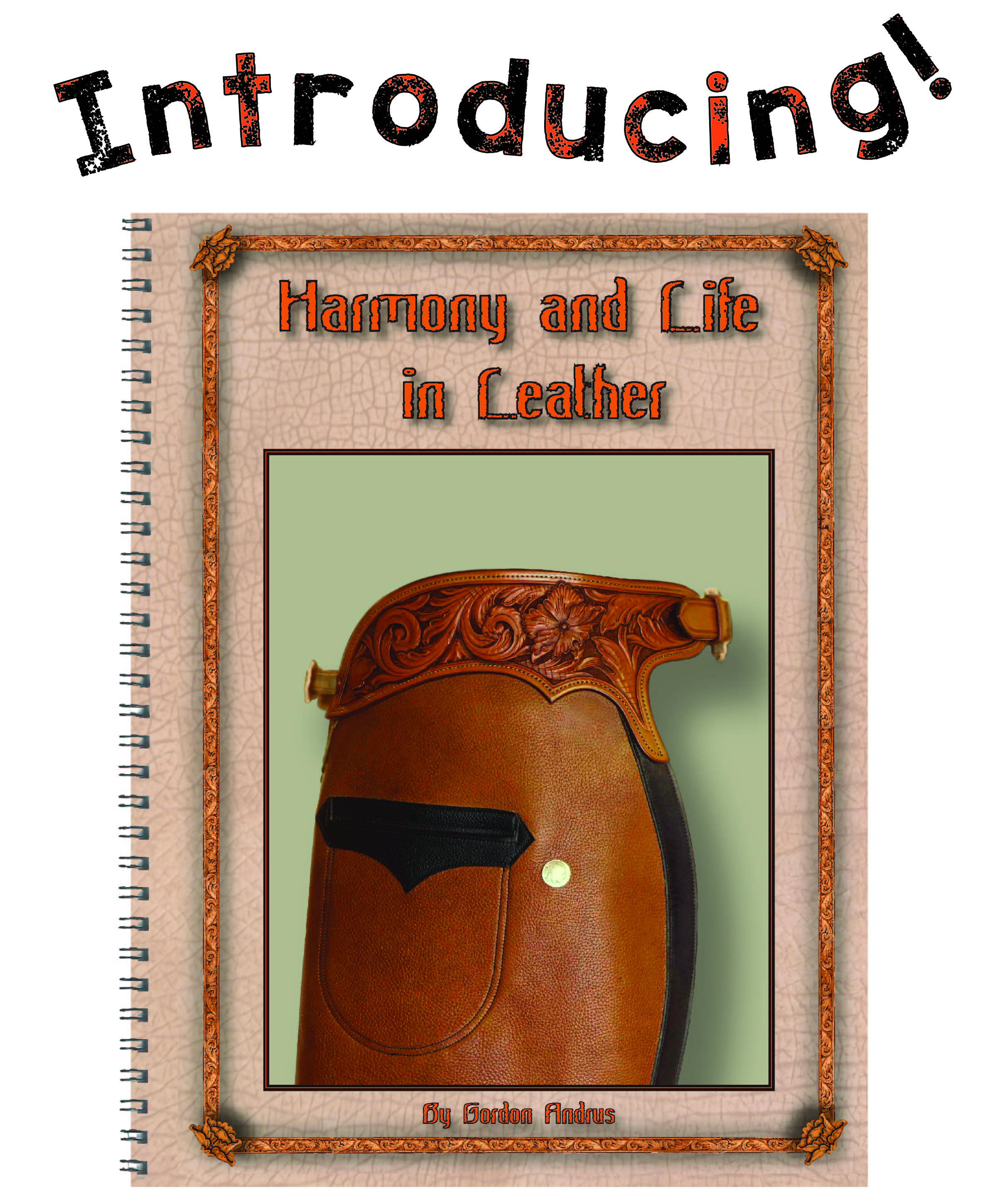 Well at long last I have this in print and available here at Red Ox Brand Tools. I’m pretty excited about this new book. It comes with several patterns to use with the techniques and concepts that are covered in depth throughout the book. It contains 220 illustrations, and presents a unique insight into the art of ornamental tooling in leather.
Well at long last I have this in print and available here at Red Ox Brand Tools. I’m pretty excited about this new book. It comes with several patterns to use with the techniques and concepts that are covered in depth throughout the book. It contains 220 illustrations, and presents a unique insight into the art of ornamental tooling in leather.